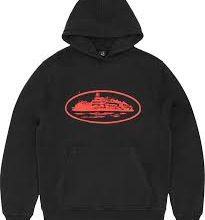How to use the best possible materials used for packaging your products?

Flexible packaging is a method of packaging goods in a more affordable and adaptable way by using materials that are pliable. It is a relatively new technique in the packaging industry but has gained popularity because of its great effectiveness and low cost. Flexible packaging material makes pouches, bags, and other product containers out of a range of flexible materials. It include foil, plastic, and paper. Depending on the products being package and how they will be use, the packaging can be create in unique shapes and sizes. To be strong but lightweight, resealable, or have a high level of protection.
Adapatability
Due to its adaptability, flexible packaging is a fantastic option for many products like food and beverage, personal care. Also household cleaning products, and pharmaceutical industries etc. Flexible packaging material is made from a wide range of materials, including polymer films, kraft paper, aluminum foil, cellulosic films, and bioplastic films. The function that each layer plays in the construction of the package, its mechanical strength, barrier properties. There are some more such as printing, heat resistance, sealing requirements, visual appeal, recyclability, cost. And other factors all have an impact on the choice of materials that are use and suitable for the product to be pack.
Varieties
Flexible packaging can be produced in a variety of materials, sizes, and forms and is frequently produce in either formed or unformed configurations. Unformed items normally arrive as a roll and are deliver to co-packers for forming and filling. Whereas formed products are pre-shape with the option of filling and sealing yourself in-house. Flexible packaging material is simple to handle and combined to create unique and adaptable designs. The materials that are most frequently use to create flexible packaging are detail here, along with some of their key qualities.
Polymeric films
A wide range of polymeric films can be build into a variety of shapes, sizes, and performance traits. Hence making polymer films a popular choice for flexible packaging material. Polyethylene (PE), polypropylene (PP), ethylene-vinyl alcohol (EVOH), polyamide (Nylon, PA), ionomers (EAA, EMAA). And ethylene vinyl acetate are the most often use polymers in flexible packaging. Polyethylene packaging film is one of the most used as it is also the most affordable of all of the packaging materials available.
Kraft Paper
The most effective way to extend the shelf life of items is to use flexible packaging with kraft paper as it is inexpensive, lightweight, and easy to use. It is a flexible packaging material for products with a high requirement for strength and durability. Since it has high tensile strength, strong flexibility, and good tear resistance. Single multiwall paper bags and sacks (for food, chemicals, flour bags, etc.), sale bags for bakery products, and wrapping are among the products it is use for. The market is primarily driven by rising demand for environmentally friendly and sustainable packaging.
Aluminum foil
The best dead fold characteristics are found in aluminum foil. Excellent 100% barrier protection is provided against all gas, moisture, and light. And hence it is a preferred choice of flexible packaging material. Because it fractures when folded, it is typically support by plastic and/or paper (in a multi-layer structure) to reflect radiant heat. In the flexible packaging industry, it is mostly use for tamper-proof lidding of yogurt. And flavored drinks, cosmetics, food items, beverages, and powders. As well as medications, ready meals, soups, and sauces.
Cellulosic and bioplastic films
In order to reduce the overall carbon footprint of the packaging sector. Sustainable alternatives for flexible packaging have been develop using cellulose and bioplastic film, Both of which have good biodegradable qualities. This is a result of people being more aware of environmental issues. The use of cellulose and bioplastic film as flexible packaging material is growing in the food, bakery, confectionery, and snack-packaging industry. These films are widely accessible, abundant in nature, and simple to recycle, biodegrade, and compost.





